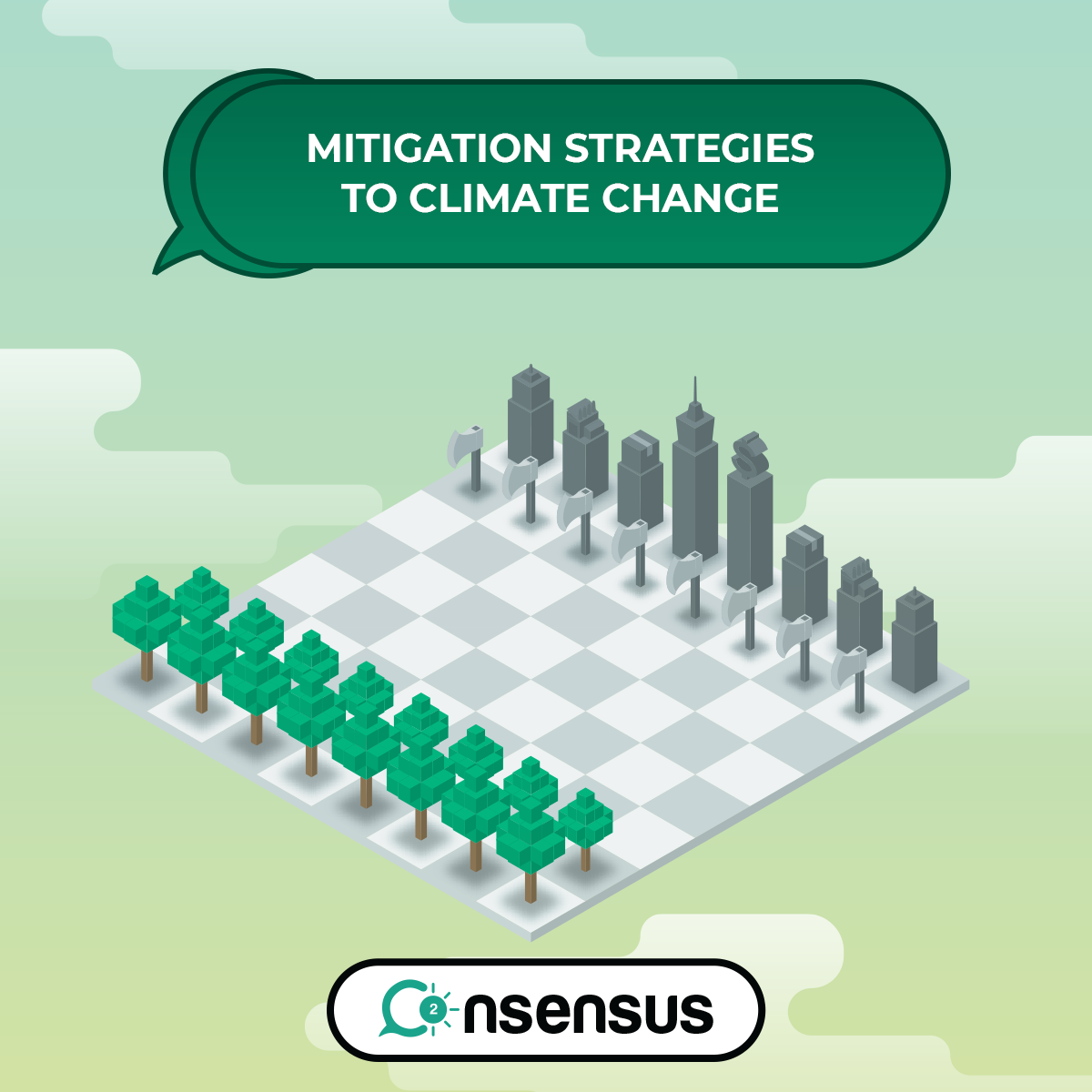Mitigation refers to actions that reduce the human contribution to the planetary greenhouse effect. Mitigation actions include lowering emissions of greenhouse gases like carbon dioxide and methane, and particles like black carbon (soot) that have a warming effect. Increasing the net uptake of carbon dioxide through land-use change and forestry can make a contribution as well.
As a whole, human activities result in higher global concentrations of greenhouse gases and to a warming of the planet – and the effect is increased by various self-reinforcing cycles in the Earth system (such as the way melting sea ice results in more dark ocean water, which absorbs more heat, and leads to more sea ice loss). Also, the absorption of increased carbon dioxide by the oceans is leading to increased ocean acidity with adverse effects on marine ecosystems.
Since 2000, anthropogenic carbon dioxide (CO2) emissions have risen by more than 3% annually, putting Earth’s ecosystems on a trajectory towards rapid climate change that is both dangerous and irreversible. To change this trajectory, a timely and ambitious program of mitigation measures is needed. Several studies have shown that, to stabilize global mean surface temperature, cumulative anthropogenic greenhouse-gas (GHG) emissions must be kept below a maximum upper limit, thus indicating that future net anthropogenic emissions must approach zero.
If humanity oversteps this threshold of maximum safe cumulative emissions (a limit that may already have been exceeded, no amount of emissions reduction will return the climate to within safe bounds. Mitigation strategies that draw down excess CO2 from the atmosphere would then assume an importance greater than an equivalent reduction in emissions.
In practical terms, mitigation policy is predominantly implemented from a national policy perspective, following from international negotiations and agreements, and cascading down to sectors and level of governance. The primary focus of mitigation has been on electricity sector. On the supply side, there is a literature on the possible effects of climate change on generation including effects on thermal plant (fossil and nuclear), hydroelectricity generation and other renewables (wind, solar, and bioenergy).
As mitigation involves a different generation mix, with a stronger share of renewable and nuclear, there is a need consider the resilience of long lived, climate sensitive technologies such as hydropower. There is also a need to ensure cross-sectoral linkages of competition for water and effects on ecosystems are taken into account for bioenergy plantations.
On the demand side, higher temperatures from climate change will reduce heating in colder seasons/colder areas but increase cooling in warmer climates. The latter increases air conditioning, electricity demand and GHGs, creating conflict with mitigation objectives, unless supply is decarbonized or passive cooling design is adopted. The issue is part of a wider energy-GHG nexus in the built environment, especially in urban areas.
Managing Forests for Climate Change Mitigation
Forests currently absorb billions of tons of CO2 globally every year, an economic subsidy worth hundreds of billions of dollars if an equivalent sink had to be created in other ways. Concerns about the permanency of forest carbon stocks, difficulties in quantifying stock changes, and the threat of environmental and socioeconomic impacts of large-scale reforestation programs have limited the uptake of forestry activities in climate policies.
With political will and the involvement of tropical regions, forests can contribute to climate change protection through carbon sequestration as well as offering economic, environmental, and sociocultural benefits. A key opportunity in tropical regions is the reduction of carbon emissions from deforestation and degradation.
The Role of Coastal Plant Communities for Climate Change Mitigation and Adaptation
Marine vegetated habitats (sea grasses, salt-marshes, macro algae and mangroves) occupy 0.2% of the ocean surface, but contribute 50% of carbon burial in marine sediments. Their canopies dissipate wave energy and high burial rates raise the seafloor, buffering the impacts of rising sea level and wave action that are associated with climate change. The loss of a third of the global cover of these ecosystems involves a loss of CO2 sinks and the emission of 1 Pg CO2 annually.
(For every mole of carbon dioxide, there is one mole of carbon. The molar mass of carbon is 12.01 g.
So 1 ppm carbon dioxide =1.7773 x 1014 moles x 12.01 grams/mole = 2.134 Pg. of carbon).
The conservation, restoration and use of vegetated coastal habitats in eco-engineering solutions for coastal protection provide a promising strategy, delivering significant capacity for climate change mitigation and adaption.
Stopping Investment in Carbon Capture and Storage and Reduce Government Subsidies of Fossil Fuels
Government investment in carbon capture and storage (CCS) is a large and expensive fossil-fuel subsidy with a low probability of eventual societal benefit. Within the tight resource constrained environments that almost all governments are currently operating in, it is, irresponsible to sustain this type of subsidy. CCS has been promoted as a ‘bridging’ technology to provide CO2 reductions until non-fossil-fuel energy is ramped up. But the past decade of substantial government investment and slow progress suggests that the challenges are any and it will take longer to build the CCS bridge than to shift away from fossil fuels.
Optimism about the potential of CCS is based primarily on research on technical feasibility, but very little attention has been paid to the societal costs of governments perpetuating fossil-fuels or to the socio-political requirements of long-term regulation of CO2 stored under-ground. Deep systematic change is needed to alter the disastrous global fossil-fuel trajectory.
Government investment in CCS and other fossil-fuel technologies must end so that the distraction and complacency of the false sense of security such investments provide are removed. Instead of continuing to invest billions in CCS governments should invest more aggressively in technologies, policies, and initiatives that will accelerate a smooth transition to non-fossil fuel based energy systems.
We need to divest from perpetuating a fossil-fuel infrastructure and invest instead in social and technical changes that will help us prepare to be more resilient in an increasingly unstable and unpredictable future.
